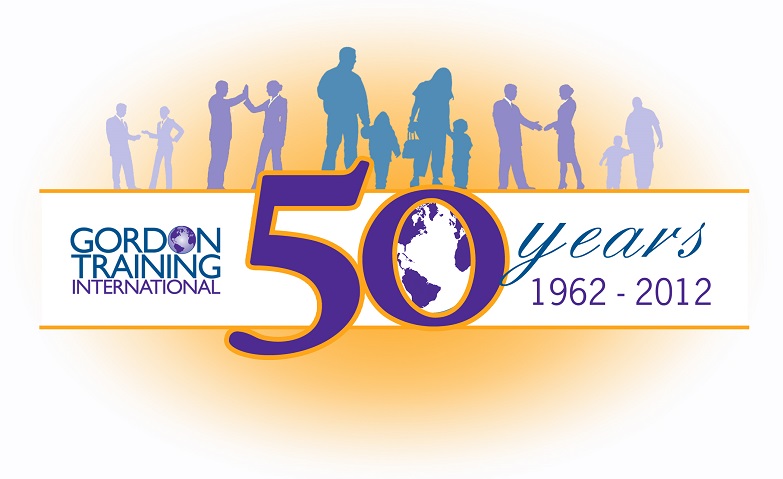So . . . What About Anger?
This issue arises in Session 4 when we start learning ways to confront children's unacceptable behavior.
Trying to leave behind You-Messages that blame, judge or belittle the child and cause defensiveness or resistance, we practice another way of encouraging her to change her behavior to help us meet our needs:
We have our list of feelings to consult and now, as we learn this important new skill, we direct our attention to the mad emotions that many of us are pretty familiar with.
It's a real eye-opener to hear that anger is only a secondary emotion, underneath which lie our more vulnerable states.
To use Dr. Gordon's example from Parent Effectiveness Training: The Proven Program for Raising Responsible Children, I might react furiously to a driver who suddenly cuts me off on the highway; a split second before, though, I first felt fear.
The Confrontive I-Message calls on us to get in touch with our primary feelings and express those congruently (as upset as we are on the inside is what we show on the outside). We will be more effective when we share what's REALLY going on instead of just what's on the tip of the iceberg:
“Unlike other feelings, anger is almost invariably directed at another person. ‘I am angry’ is a message that usually means ‘I am angry at YOU’ or ‘YOU made me angry.’ It is really a You-Message, not an I-Message. A parent cannot disguise this You-Message by stating it as ‘I feel angry.’ Consequently, such a message feels like a You-Message to children. A child thinks he is being blamed as the one who CAUSED his parent’s anger. The predictable effect on the child is that he will feel put-down, blamed and guilty, just as he is by other You-Messages.”
Take a look at these anger-only attempts at confrontation:
"I felt livid you took the car without asking me; I was stuck at home until Dad arrived."
"I am mad that you spilled juice on my comforter and did not tell me; now the stain is set and is so much harder to wash."
"I am so angry when you invite friends over without telling me; I feel I have to put on a happy face rather than embarrass them and send them home."
And now compare them with these primary-emotion reframes:
"I felt helpless when you took the car without asking me; I was stuck at home until Dad arrived."
"I am weary and frustrated that you spilled juice on my comforter and did not tell me; now the stain is set and is so much harder to wash."
"I feel dismayed and burnt out when you invite friends over without telling me; I feel I have to put on a happy face rather than embarrass them and send them home."
Can you sense how there is a better chance the child might feel less defensive and more empathetic upon hearing the second set? (Of course, often there is pushback nonetheless, because it's never pleasant to hear you have prevented someone from meeting her needs; we learn how to deal with that by Shifting Gears to Active Listen, but that's for another post, like this one.)
With all the talk in P.E.T. about how anger is a secondary emotion, however, some participants have seemed stumped and even sheepish when trying to identify their feelings.
"All I know is I'm angry, but I'm not supposed to feel that, am I?"
"I know I have to find what's beneath the anger but what do I do about the fact that I want to strangle my kid?"
Gee, I guess we all must have missed the school lesson on how to deal with anger. Hah! So few of us -- are there any? -- have been supported with processing any emotion, much less this biggie.
Doing this important work now, though, means we can give a ginormous gift to our children through modeling and consulting!
So here's a possible anger strategy that has helped me.
Accept Your Anger
I realized I hadn't stressed this point enough when it became clear in a later session that parents felt they had to stuff down their anger.
“Anger is important," I told them. "Actually," I continued, drawing upon the work of Tara Brach, a psychologist and meditation leader, "It’s been called ‘evolutionary’ -- we require it as a signal that an important need is not being met.”
And so Tara guides clients and students through really sitting with the intense feeling, allowing the anger to be as big as it needs to be. Not only does acknowledging it lead to self-understanding, but the process fosters self-compassion and compassion for others as well.
Linda Adams, President of Gordon Training International, says as much in Be Your Best, the Effectiveness Training program for individuals:
“You need not be afraid of your anger, and need not think of it as abnormal and unhealthy. You have a right to feel angry when your needs are blocked. Learning to accept anger as a valid emotion or reaction is the first step in coming to terms with it. Only when you treat it that way can you begin to understand it, explore it, grow from it. . . We can never discover, experience, and come to terms with other underlying negative feelings — and many resulting positive feelings — until we have the courage to express our anger.”
Express Your Anger
Whenever I am able, I express and explore my fury on my own; then I might not feel like I have to bring it up but rather just go straight to the primary emotion.
"Hey guys, I realize I have been feeling super stressed -- I need rest and fun but I don’t see any chance of that on the horizon for a couple of days. A little while ago, when I saw the living room and dining room table the way it is, and the shoes and bags on the floor, I felt and am still feeling irritated and exhausted.”
Sometimes, though, there is not the time to process privately. While I take care not to vent my anger on my children, I also want to make clear my new, friendly attitude toward it. I have shown them the Anger Iceberg so they have a context:
“I am so boiling right now! Yet I know that beneath it is something else. I think I feel . . . . oh gosh, I think it's that I'm really afraid about what your behavior means for our relationship/your well-being/your judgment/your future!"
And then there are times when I must remove myself before making any sense of the situation or hoping to be at all coherent. I'll say I need to go for a run or sit and deal with my ire first before talking:
“I don’t want to explode with you, and these strong feelings need to get out somehow!”
Explore Your Anger
There are a couple of ways I work with anger; here, I'd like to share Tara's RAIN process, a Buddhist mindfulness tool we can use with any difficult emotion.
R -- Recognize
A -- Allow
I -- Investigate with Intimate attention
N -- Non-identification, resting in Natural awareness
Tara's own sharing during my online course with her affected me greatly. She spoke of a struggle with her son, then in high school, describing how much she disapproved of his work habits, the marijuana, his sleeping in, his buddies etc.
One day, while at a retreat, she called him at home and could hear his friends in the background. He cut their conversation short, and Tara says she fell into a rage.
At that moment, she made a conscious decision to Recognize and Allow:
"I basically said to the rage, "Be all you want.' It was exploding and the more I let it explode, the more I could feel under it a really deep hurt.
"Then, I practiced being with the hurt, and as I was being with the hurt, I started to be a little gentler with it, and trying to go really deep -- really deep into the belief that was there. . ."
Tara continued to Investigate with Intimate attention what she was feeling, believing and needing.
"[T]he answer was: 'He doesn't love me.' That was the belief, and I was just saying it.
"I actually said it again, 'He doesn't love me' and, of course, the weeping started and I was feeling even more strongly the pain -- the sense of loss and grief.
"Then, with that, there was also the belief: 'I'm a bad parent.'
"So, there was shame mixed in with that investigating.
"As the feelings got more raw and true, I went, in a deep way, into an unlovable place -- not being a good mother and he doesn't love me converged into unlovable."
Eventually she came to a place of Non-identification with her angry self (the limited ego) and, instead, Naturally rested in her fuller being who could regard herself with tenderness and openness.
It was then that Tara was reminded of the good in her son; she saw "beyond the mask of the self-indulgent party animal -- forgiving -- and into a being who wants to live fully, enjoy life, and doesn't like it when he's criticized."
That compassion started to turn their relationship around.
Carving out the time, like Tara, to mindfully plumb anger for its insights is hard to do (check out my Perfectly Good Day series) but worth it. After all, anger is basically a sign that reads:
SIT UP AND PAY ATTENTION! Find the crucial need that is being neglected!
Not only do we serve ourselves, but we also build one of four important skills.
And, if we need any more incentive, we can be reminded of this:
“Probably the greatest reward that comes to a parent from being transparent is the relationship it promotes with the child. Honesty and openness foster intimacy — a truly interPERSONAL relationship. My child gets to know me as I am, which then encourages her to reveal to me who she is. Instead of being alienated from each other, we develop a relationship of closeness. Ours becomes an AUTHENTIC relationship — two real persons, willing to be known in our realness to each other.”
Thanks for reading!
I would love to hear what you have been doing with the secondary emotion of anger. Do you express it openly, and then add a primary emotion? Do you scream all you have to into a pillow first? Do you take a time-out for yourself? How do you model anger management for your kids?
Credits: Angry mother (http://www.thesituationist.files.wordpress.com/2007/11/angry-woman.jpg)







